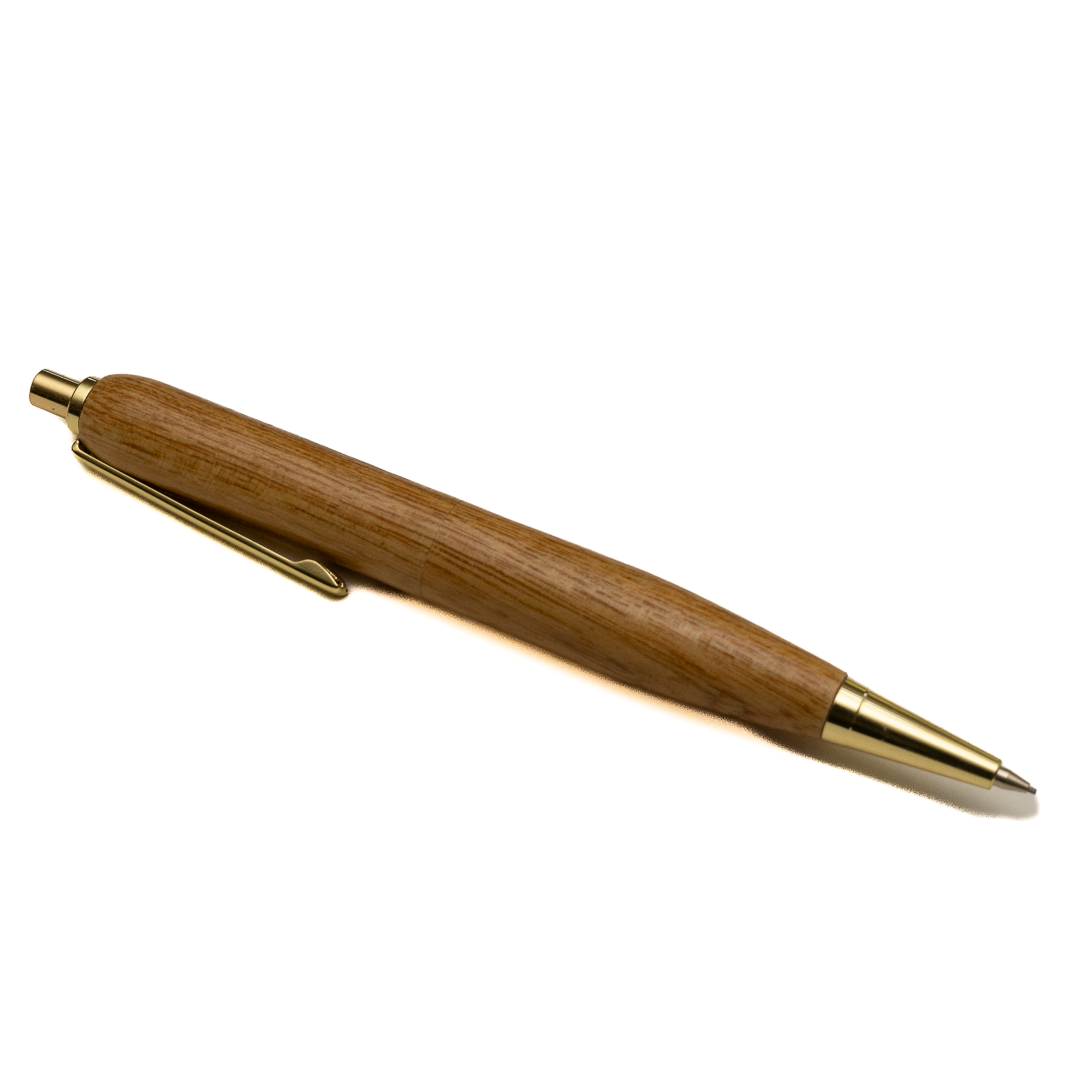The Wildwood story
All my handcrafted turned wooden Pens are manufactured from "Stablized" woods sourced locally from the hills surrounding Mosgiel, a small town situated in the South Island of New Zealand.
My signature wood is "Spalted" Furze or Gorse it is very durable and was used in early times as pins in small boat construction. Although it has very attractive figured grain it is a very difficult wood to work because of its propensity to warping and cracking. To overcome this my raw materials go through an extensive stabilisation process that ensures they will not be effected by changes in humidity or temperature. The pens are all ballpoint with twist mechanism. The refills are standard Cross type of medium thickness
What is Gorse?
Ulex Europaeous (Gorse or Furze) was introduced to New Zealand from Western Europe in the very early stages of European settlement. It was recorded by Charles Darwin during his voyage through New Zealand waters in 1835 as growing in hedges in the Bay of Islands. Its spread and development as a weed in New Zealand's temperate climate was rapid, but settlers failed to recognise the threat. Gorse seed continued to be imported and plantings deliberately established well into the 1900s.
The introduction of Gorse resulted in large spreading infestations over hundreds of hectares, peaking in the late 1940s. The seed can lie dormant on the ground for up to 50 years, germinating quickly after the adults have been removed. Unfortunately, most methods of removing adult gorse plants, such as burning or bulldozing them, create the ideal conditions for the gorse seeds to germinate and total eradication with current technology seems impossible. Gorse is now one of the most widely recognised agricultural weeds in New Zealand. It covers 700,000 hectares (1,700,000 acres) at varying densities — a total of 5% of the land area of New Zealand when excluding existing indigenous forest, vegetated sub-alpine and alpine areas. Gorse became New Zealand's most costly weed to control, an estimated $22 million per annum by the early 1980s
When you purchase one of my Wildwood Pens you are helping eliminate this invasive pest weed.
What is Stablization
First, some background. Wood, as you may know, is a natural material, and wood moves. Differences in humidity and temperature can cause wood to expand or contract, changing sizes, warping and cracking. This is caused by water absorbed into the wood, causing expansion, or water being lost from the wood, causing contraction. This is a problem if you want to use wood for something requiring tight tolerances, like making a pen.
To eliminate this problem my pen blanks are firstly dried to remove all the water. Then they are subjected to absolute zero vacuum which removes all the trapped air. The space that was occupied by the air is now replaced by a special clear resin. Once the blanks are saturated with resin they are baked in an oven for several hours causing the resin to set. Once cooled the blanks are now ready to be transformed into spectacular pens that will last indefinitely.













